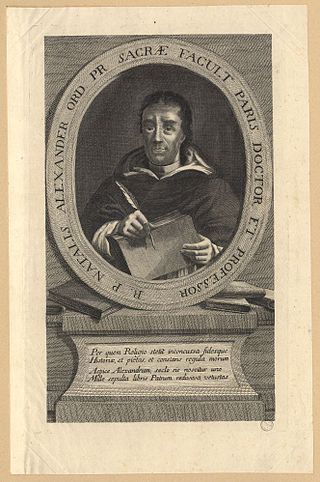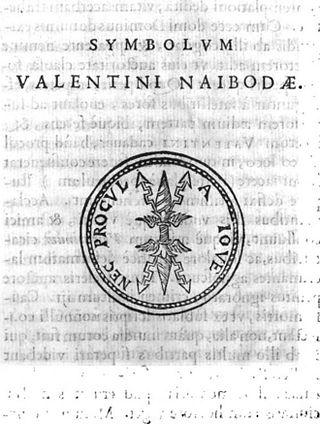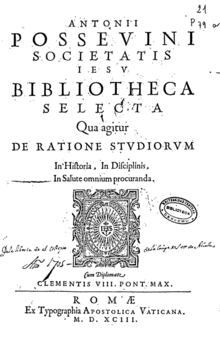
Conrad Gessner was a Swiss physician, naturalist, bibliographer, and philologist. Born into a poor family in Zürich, Switzerland, his father and teachers quickly realised his talents and supported him through university, where he studied classical languages, theology and medicine. He became Zürich's city physician, but was able to spend much of his time on collecting, research and writing. Gessner compiled monumental works on bibliography and zoology and was working on a major botanical text at the time of his death from plague at the age of 49. He is regarded as the father of modern scientific bibliography, zoology and botany. He was frequently the first to describe species of plants or animals in Europe, such as the tulip in 1559. A number of plants and animals have been named after him.

Jean Bodin was a French jurist and political philosopher, member of the Parlement of Paris and professor of law in Toulouse. Bodin lived during the aftermath of the Protestant Reformation and wrote against the background of religious conflict in France. He seemed to be a nominal Catholic throughout his life but was critical of papal authority over governments and there was evidence he may have converted to Protestantism during his time in Geneva. Known for his theory of sovereignty, he favoured the strong central control of a national monarchy as an antidote to factional strife.
Martin Anton Delrio SJ was a Dutch Jesuit theologian. He studied at numerous institutions, receiving a master's degree in law from Salamanca in 1574. After a period of political service in the Spanish Netherlands, he became a Jesuit in 1580.

Leo Allatius was a Greek scholar, theologian, and keeper of the Vatican library.

Daniello Bartoli, SJ was an Italian Jesuit writer and historiographer, celebrated by the poet Giacomo Leopardi as the "Dante of Italian prose"

Alessandro Valignano, S.J., sometimes Valignani, was an Italian Jesuit priest and missionary born in Chieti, part of the Kingdom of Naples, who helped supervise the introduction of Catholicism to the Far East, and especially to Japan.

Giovanni Botero was an Italian thinker, priest, poet, and diplomat, author of Della Ragion di Stato , in ten chapters, printed in Venice in 1589, and of Universal Relations,, addressing the world geography and ethnography. With his emphasis that the wealth of cities was caused by adding value to raw materials, Botero may be considered the ancestor of both Mercantilism and Cameralism.

Alonso Tostado was a Spanish theologian, councillor of John II of Castile and briefly bishop of Ávila. His epitaph stated "Wonder of earth, all [that] men can know he scanned."

Noël Alexandre, or Natalis Alexander in Latin was a French theologian, author, and ecclesiastical historian.

Antonio Possevino was a Jesuit protagonist of Counter Reformation as a papal diplomat and a Jesuit controversialist, encyclopedist and bibliographer. He was the first Jesuit to visit Muscovy, Sweden, Denmark, Livonia, Hungary, Pomerania, and Saxony in amply documented papal missions between 1578 and 1586 where he championed the enterprising policies of Pope Gregory XIII.

The Coverdale Bible, compiled by Myles Coverdale and published in 1535, was the first complete Modern English translation of the Bible, and the first complete printed translation into English. The later editions published in 1537 were the first complete Bibles printed in England. The 1537 folio edition carried the royal licence and was therefore the first officially approved Bible translation in English. The Psalter from the Coverdale Bible was included in the Great Bible of 1540 and the Anglican Book of Common Prayer beginning in 1662, and in all editions of the U.S. Episcopal Church Book of Common Prayer until 1979.

Gabriel Vásquez, known as Bellomontanus, was a Spanish Jesuit theologian and scholastic philosopher. Vásquez was the foremost academic rival of his fellow Jesuit Francisco Suárez, whose philosophical views he often and openly criticized. Suárez's treatment of the jus gentium, like his treatment of natural law, was partly directed at combatting the arguments of Vásquez.
Pierre Busée was a Dutch Jesuit theologian. He assisted in producing the Jesuit Ratio Studiorum and the catechism of Peter Canisius.

Valentin Naboth, known by the latinized name Valentinus Nabodus, was a German mathematician, astronomer and astrologer.
Bibliotheca universalis (1545–1549) was the first truly comprehensive "universal" listing of all the books of the first century of printing. It was an alphabetical bibliography that listed all the known books printed in Latin, Greek, or Hebrew. It listed 10,000 titles by 1,800 authors.

Ars Historica was a genre of humanist historiography in the later Renaissance. It produced a small library of treatises underscoring the stylistic aspects of writing history as a work of art, but also introducing the contributions of philology and textual criticism in its precepts and evaluations.

Artis Historicae Penus is a compilation of 18 ars historica works brought out in 1579 by the late Renaissance Basel printer Pietro Perna. This compendium in octavo appeared in 2 volumes with a copious index. A third volume adds the final work by Antonio Riccoboni, often missing in library collections as a separate edition. Three years earlier, in 1576, Perna brought out a single volume in the same format that ran to 1140 pages and featured the central work of Jean Bodin in its title, along with twelve other authors. Perna writes a letter to the lover of histories. Editor Johann Wolf dedicates the second collection to Frederick I of Wurttemberg. He states that he has included all the princely dedications and prefaces of the single works from the source editions for the sake of completeness.
Apparatus ad omnium gentium historiam is a bibliographical guide first published in 1597 and written by Antonio Possevino.

Pierre Grégoire (c.1540–1597) was a French jurist and philosopher

Wouter Dries or Walter Driessens (1588–1655), Latinized Valerius Andreas, was an academic jurist, Hebraist, and historian from the Duchy of Brabant in the Habsburg Netherlands.
















